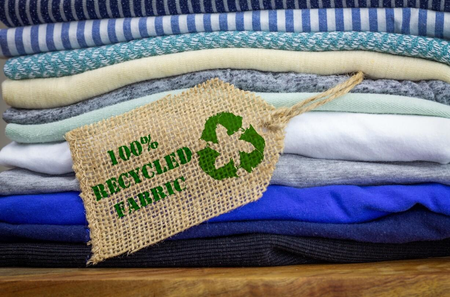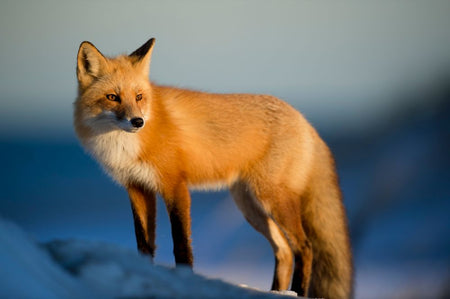Fashion, as we know, has evolved over the years it started from minimalistic to outrageous and then back to ethnic. Nowadays fashion is not just a choice but a way of life. It has been so inculcated in our culture that we contribute to the fashion industry every day without realizing it. We know now that fashion comes at a risk of depleting our earth's resources. People make informed decisions now that they are more concerned about the environment and want to buy things that are environment friendly thus comes sustainable fashion practices.
Ethical About Nature

Sustainable fashion is a conscious decision to manufacture, design, and market clothing in environmentally friendly ways. Ethical Fashion is a term used to describe an industry ethically conscious for the social welfare and worker rights not just for the consumer with growing awareness and a movement for the planet and the masses everyone agrees that fashion should not come at the cost of someone's life or by polluting the environment. The sustainable fashion industry is sustainable for decades and is environmentally friendly. It is completely opposing the prevalent fashion industry which is best known as fast fashion.
Fast Fashion is a marketing and manufacturing method where clothes and accessories are produced rapidly and considered disposable by the consumer. The clothes are considered affordable at the cost of making them less durable. Fashion industry marketing such brands tends to have multiple launches of new designs within months whereas sustainable or traditional fashion houses have a couple of launches within a year.
Fashion Industry Pollution Facts
The fast fashion cycle is crippling for the environment. It is not sustainable as it depletes the Earth's resources at exponential rates, exploits the rights of laborers, and results in pollution. The cheap fibers used are not bio-degradable or environment-friendly. The dyes, machines, and chemicals used in fast fashion factories are increasing pollution at alarming rates. The mindless consumption of fashion goods, striving to be the trendiest and most chic has disturbed the balance of our environment. The fashion industry is minting money due to this mindless, selfish consumption and it exploits the rights of poor laborers in third world countries. The collapse of a factory in Bangladesh gave a rude wake-up call to the fashion mongers around the world and led to a much-needed consciousness for the world around us.
Fashion Trends are Changing
The fashion industry is ever-evolving and no two trends are similar. If we were to look at fashion trends over the past seven decades or so we see a complete revolution of ideas and trends. It has been noticed that people went from simple to stunning to overwhelming and then demure trends. Today the world is at an impasse. Fashion is every individual's personal choice and style. For some gaudy and loud may be trendy, with bold prints and darker colors. For others the complete opposite maybe classic fashion, with subtle prints, lighter hues, and graceful cuts. For an industry so susceptible to change it seems complete madness to destroy the environment for it.

Natural and Organic Materials
Natural materials such as silk, linen, cotton are preferable to synthetically made ones like polyester and nylon. Natural and organic fibers are biodegradable and can compost back into the soil causing no harm to the environment. Whereas synthetic fibers increase environmental pollution by filling landfills and being non-recyclable.
Benefits of Recycled Fabric
The name itself says it all. Recycled fabric is a great way to produce fashionable clothing since it is not extracting anything from the environment. The Earth's resources are not depleted and since it's recycled it means it is biodegradable.
Vegan Clothing
Vegan clothing is products manufactured without any animal products. This is a conscious decision to use plant-based and man-made fibers. Vegan clothing also contributes to the environmentally friendly practices of the sustainable fashion industry. This industry avoids silk, fur, leathers, angora, and down and instead uses cotton and other plant-based materials. Vegan clothing is cruelty-free clothing. Cruelty-free clothing is conscious buying of products in whose manufacturing neither animal nor the environment was harmed. So no silk, fur, cashmere, angora, or down is used only cotton, besides no such materials are sued whose dyes or manufacturing process caused harm to the environment or produced toxins.
The Way Forward
We conclude that sustainable fashion may be defined as clothing, footwear, accessories that are manufactured in the most sustainable and environmentally friendly process. It is a decision not to harm the world while catering to one's needs. It considers both environmental and socio-economic aspects. The whole process is thoroughly mindful of the raw materials, labor, resources, recycled materials, and processes involved in creating a product. It may be daunting and overwhelming at first to make a switch from fast fashion to sustainable fashion but in the long run, it is crucial as it is ensuring the mindful productive use of resources without making waste or causing harm. It is equally important to be mindful of the exploitation of the world for the sake of a selected few. The whole industry needs to stop its practices of cutting costs at the expense of child laborers, environmental pollution, and animal exploitation.
The world needs a respite now from the toxic dumping to the mindless depletion. It needs time to respite and replenish its resources. If we as consumers would not care for our planet, there may be a time when we wouldn’t have a healthy world to live in.







